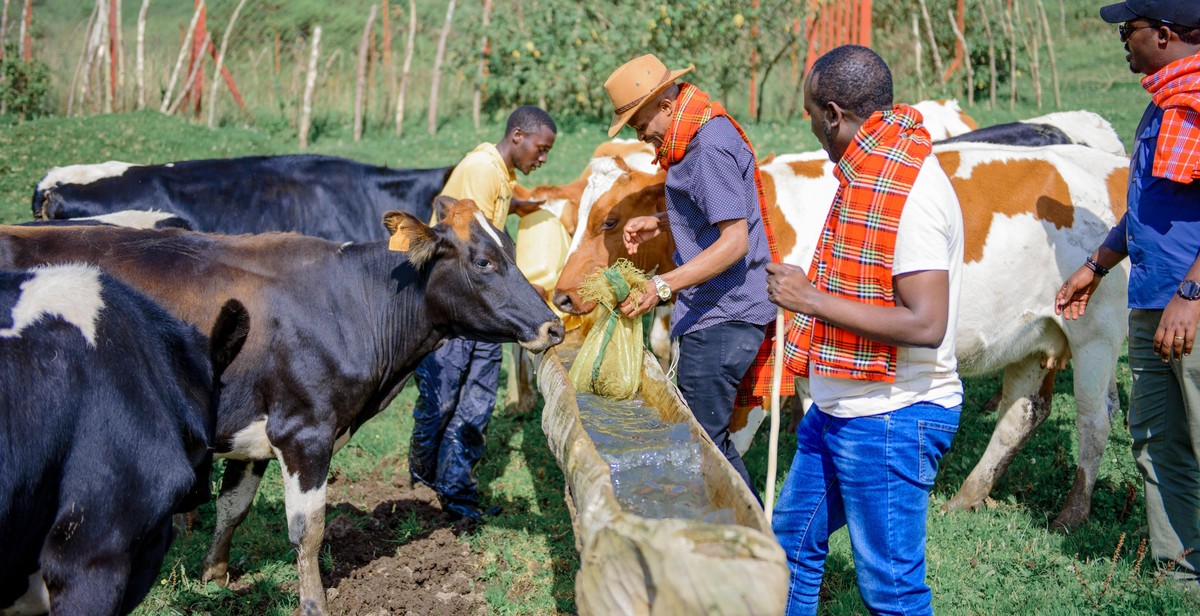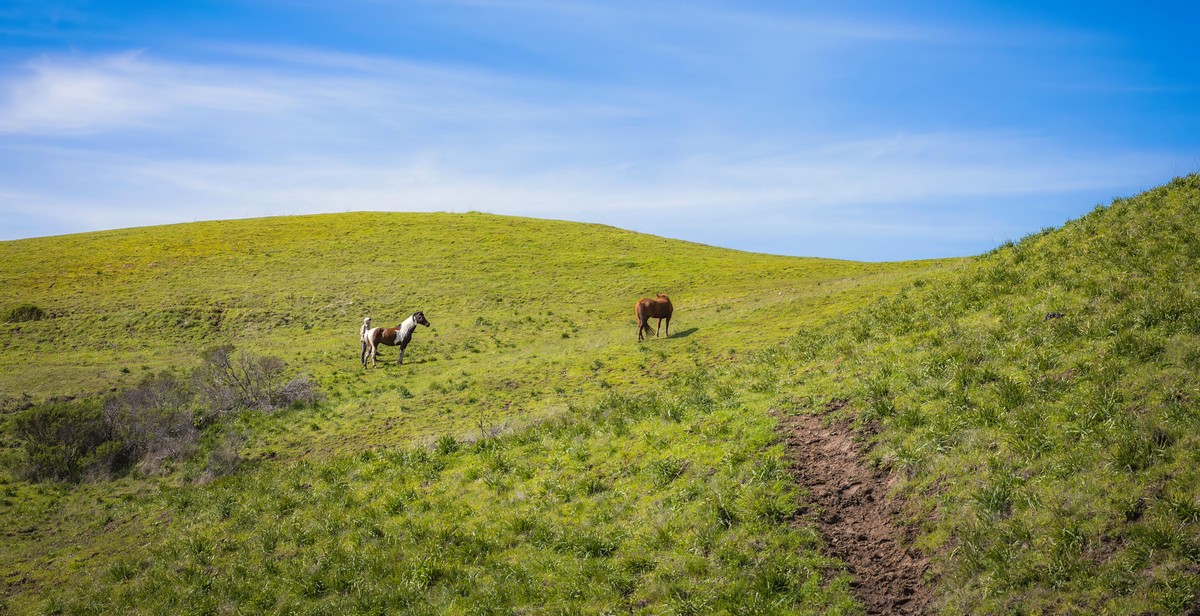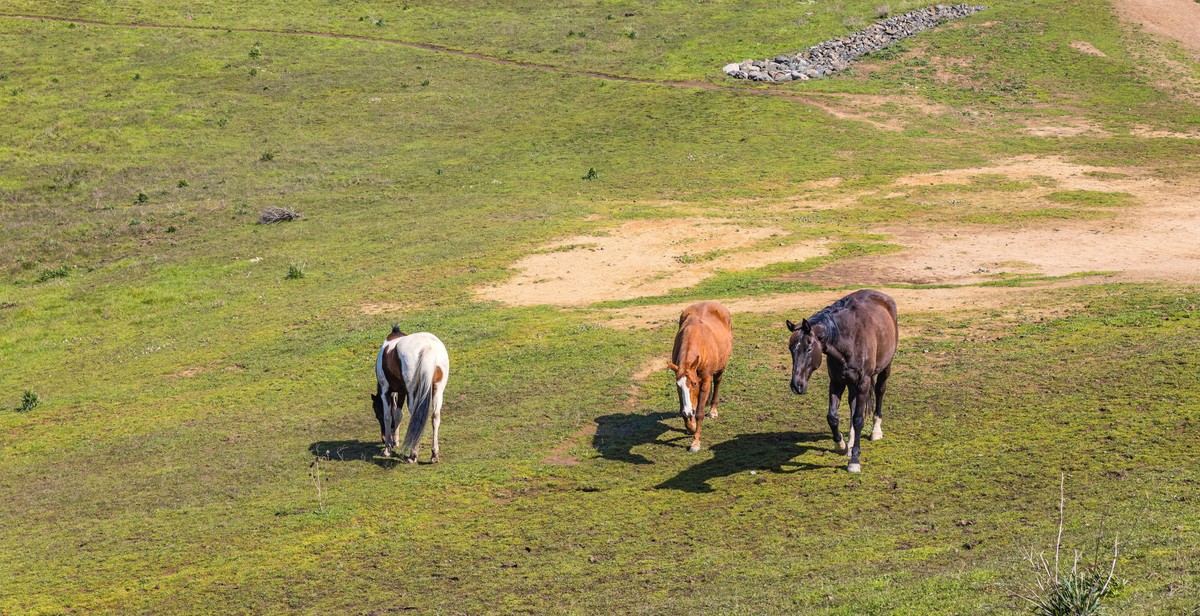How to Manage Buffalo Grazing: Rotational Grazing Techniques for Sustainable Pasture Management
Buffalo grazing is an essential part of sustainable pasture management. However, improper grazing practices can lead to overgrazing, soil erosion, and a decline in pasture health. To ensure the long-term health of the pasture, it is essential to implement proper grazing management techniques.
Rotational Grazing
One of the most effective grazing management techniques for buffalo is rotational grazing. This technique involves dividing the pasture into smaller paddocks and rotating the buffalo through them. This ensures that the buffalo have access to fresh forage while allowing the previously grazed paddocks to recover.
Rotational grazing provides several benefits, including:
- Improved forage quality and quantity
- Reduced soil erosion and compaction
- Increased biodiversity
- Improved animal health and productivity
Implementing Rotational Grazing
Implementing rotational grazing involves careful planning and management. It is essential to determine the appropriate stocking rate, paddock size, and grazing duration. The grazing plan should also consider the seasonality of the forage growth and the nutritional requirements of the buffalo.
By implementing proper rotational grazing techniques, buffalo farmers can ensure the long-term health and productivity of their pastures while reducing their environmental impact.

Understanding Rotational Grazing
Rotational grazing is a technique of managing grazing lands where livestock are moved from one paddock to another in a planned sequence. This grazing technique involves dividing the pasture into smaller paddocks and allowing animals to graze on one paddock at a time. The livestock are then moved to another paddock once the grass in the current paddock has been grazed down to a certain level.
Benefits of Rotational Grazing
Rotational grazing has numerous benefits, both for the livestock and the pasture. Some of the benefits include:
- Better pasture management: By rotating the animals, the pasture gets a chance to rest and regrow, which helps to maintain a healthy and productive pasture. This helps to increase the carrying capacity of the pasture, which means more animals can be grazed on the same amount of land.
- Improved animal health: Rotational grazing helps to reduce the risk of overgrazing and nutrient deficiencies, which can lead to poor animal health. The animals also have access to fresh and nutritious grass, which helps to improve their overall health and productivity.
- Reduced environmental impact: Rotational grazing helps to minimize soil erosion, nutrient runoff, and other environmental impacts associated with traditional grazing methods. This helps to maintain the health and productivity of the land for future generations.
- Increased profitability: By improving pasture management and animal health, rotational grazing can help to increase the profitability of a livestock operation. This is because it allows for more efficient use of resources and can help to reduce input costs.
Overall, rotational grazing is a sustainable and effective method of managing grazing lands. By implementing this technique, livestock producers can improve pasture productivity, animal health, and profitability, while also reducing the environmental impact of their operations.

Preparing for Rotational Grazing
Rotational grazing is a sustainable technique for managing buffalo grazing. It involves dividing a pasture into smaller paddocks and rotating the buffalo through them. This allows the grass to recover between grazings, resulting in healthier pastures and better-quality forage.
Assessing Your Pasture
The first step in preparing for rotational grazing is assessing your pasture. You need to determine the carrying capacity of your land, which is the number of buffalo that can graze on it without damaging the pasture. You also need to assess the soil fertility, the type of grasses growing in the pasture, and the topography of the land.
You can use a soil test to determine the soil fertility and pH levels. This will help you determine the type of fertilizer and lime to apply to your pasture. You also need to identify any areas of the pasture that are prone to erosion or nutrient depletion. These areas may require extra attention and management.
Fencing
Once you have assessed your pasture, you need to install fencing to create smaller paddocks. The fencing needs to be strong and durable, as buffalo are powerful animals that can easily break through weak fences. You can use electric fencing or permanent fencing, depending on your budget and needs.
You also need to determine the size of your paddocks. The size will depend on the carrying capacity of your land, the number of buffalo you have, and the time you want to spend managing the pasture. A general rule of thumb is to create paddocks that are large enough to provide two to three days of grazing for your buffalo.
Water Supply
Finally, you need to ensure that your buffalo have access to clean water in each paddock. You can use a permanent water source or install temporary water troughs. The water source needs to be located in the center of the paddock, so that the buffalo can access it easily from all corners of the paddock.
By assessing your pasture, installing strong fencing, and providing clean water, you can prepare for rotational grazing and ensure sustainable pasture management for your buffalo.

Implementing Rotational Grazing
Rotational grazing is a technique that involves dividing the pasture into several paddocks, and then moving the herd from one paddock to another after a certain period. This technique is highly effective in managing buffalo grazing and ensuring sustainable pasture management. The following are the steps to implementing rotational grazing:
Dividing the Pasture into Paddocks
The first step in implementing rotational grazing is to divide the pasture into several paddocks. The number of paddocks will depend on the size of the pasture and the number of buffalo you have. Ideally, you should have enough paddocks to allow for a rest period of at least 30 days for each paddock. This will ensure that the grass has enough time to recover before the buffalo graze on it again.
Determining Stocking Density
The next step is to determine the stocking density for each paddock. This will depend on the size of the paddock and the number of buffalo you have. The general rule of thumb is to have one adult buffalo per acre of pasture. However, you should adjust the stocking density depending on the quality of the pasture and the time of year.
Grazing Period and Rest Period
After determining the stocking density, you should then establish a grazing period and a rest period for each paddock. The grazing period should be long enough to allow the buffalo to graze on the grass but short enough to prevent overgrazing. The rest period should be long enough to allow the grass to recover but short enough to prevent the grass from becoming too mature.
Moving the Herd
Finally, you should move the herd from one paddock to another after the grazing period is over. This will allow the grass in the previous paddock to rest and recover. When moving the herd, you should ensure that there is enough water and shade in the new paddock. You should also monitor the buffalo to ensure that they are not grazing too much in one area.
| Steps | Description |
|---|---|
| Dividing the Pasture into Paddocks | Divide the pasture into several paddocks to allow for a rest period of at least 30 days for each paddock. |
| Determining Stocking Density | Determine the stocking density for each paddock depending on the size of the paddock and the number of buffalo you have. |
| Grazing Period and Rest Period | Establish a grazing period and a rest period for each paddock to prevent overgrazing and allow the grass to recover. |
| Moving the Herd | Move the herd from one paddock to another after the grazing period is over to allow the grass in the previous paddock to rest and recover. |

Monitoring and Adjusting Your Grazing Plan
Implementing a grazing plan for your buffalo herd is just the beginning. In order to ensure the long-term sustainability of your pasture, you must monitor and adjust your grazing plan as needed. Here are some key factors to consider:
Assessing the Condition of Your Pasture
Regularly assessing the condition of your pasture is essential to making informed decisions about your grazing plan. Some key indicators to look for include:
- Grass height and density
- Presence of bare spots or erosion
- Quality of forage
- Overall health of the vegetation
By keeping track of these factors, you can determine when it’s time to adjust your stocking density and grazing periods.
Adjusting Stocking Density
If your pasture is showing signs of overgrazing, it’s time to adjust your stocking density. This means reducing the number of buffalo grazing in a particular area. Overgrazing can lead to bare spots, erosion, and reduced forage quality.
On the other hand, if your pasture is not being fully utilized, you may be able to increase your stocking density. This can help ensure that your pasture is being used efficiently and can lead to increased forage production.
Adjusting Grazing Periods
The length of time that your buffalo herd spends in a particular area can also impact the health of your pasture. If your pasture is showing signs of overgrazing, you may need to reduce the grazing period. This means moving your herd to a new area sooner than you would have otherwise.
Alternatively, if your pasture is in good condition and your herd is not fully utilizing the available forage, you may be able to extend the grazing period. This can help ensure that your pasture is being used efficiently and can reduce the need for supplemental feed.
| Factor | When to Increase | When to Decrease |
|---|---|---|
| Stocking Density | Pasture is not being fully utilized | Pasture is showing signs of overgrazing |
| Grazing Periods | Pasture is in good condition and herd is not fully utilizing forage | Pasture is showing signs of overgrazing |
By regularly assessing the condition of your pasture and making adjustments to your grazing plan as needed, you can help ensure the long-term sustainability of your pasture and the health of your buffalo herd.

Conclusion
Rotational grazing is a sustainable and effective technique for managing buffalo grazing in pastures. By dividing the pasture into smaller paddocks and rotating the herd between them, you can ensure that the buffalo have access to fresh, nutritious grass while also allowing the land to rest and recover. This can lead to increased productivity, improved soil health, and reduced environmental impact.
When implementing rotational grazing, it is important to carefully plan the layout of your paddocks, consider your herd size and grazing habits, and monitor the condition of your pasture regularly. By doing so, you can ensure that your buffalo have access to the resources they need to thrive while also protecting the health and productivity of your land.
Overall, managing buffalo grazing requires a thoughtful and proactive approach. By using rotational grazing techniques and staying attuned to the needs of your herd and land, you can create a sustainable and productive system that benefits both your farm and the environment.
Key Takeaways
- Rotational grazing involves dividing the pasture into smaller paddocks and rotating the herd between them.
- This technique can improve soil health, reduce environmental impact, and increase productivity.
- Effective rotational grazing requires careful planning, monitoring, and management.
- By taking a proactive approach to managing buffalo grazing, you can create a sustainable and productive system for your farm.
Want to learn more about sustainable pasture management?
| Check out our guide to pasture management | Sign up for our newsletter for regular tips and insights |
